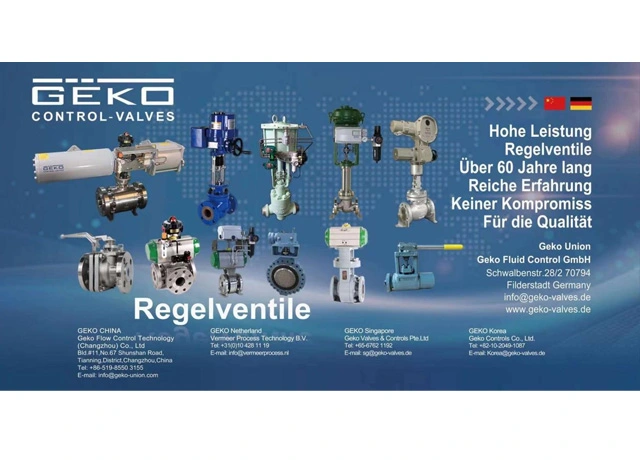Applying High-Pressure Multi-Stage Cage Guided Globe Valves
Nov 30, -0001
Introduction:
High-pressure applications in various industries demand specialized valves that can withstand extreme conditions while ensuring precise control and reliability. One such noteworthy solution is the High-Pressure Multi-Stage Cage Guided Globe Valve . This article explores the essential factors to consider when selecting and applying these valves in high-pressure environments.
Pressure Ratings and Material Selection:
High-pressure systems require valves that can handle the elevated forces involved. When selecting a High-Pressure Multi-Stage Cage Guided Globe Valve , it is crucial to consider its pressure ratings and ensure compatibility with the specific pressure levels of the application. Additionally, materials must be chosen based on the nature of the fluid and potential corrosive elements in the system.
Multi-Stage Design for Precise Control:
The multi-stage design of these valves allows for finer control over fluid flow, making them ideal for applications where precise regulation is paramount. The staged configuration enables gradual pressure reduction, minimizing the risk of cavitation and ensuring a smoother, more controlled flow.
Cage Guided for Stability and Reliability:
The cage-guided construction of these globe valves enhances stability and reliability in high-pressure environments. The cage acts as a guiding mechanism for the plug, reducing vibration and ensuring precise positioning. This feature is particularly advantageous in applications where operational stability is critical.
Anti-Cavitation Measures:
High-pressure systems are susceptible to cavitation, which can lead to damage and reduced valve performance. High-Pressure Multi-Stage Cage Guided Globe Valves often incorporate anti-cavitation measures, such as special trim designs or materials, to mitigate the effects of cavitation and maintain valve integrity over time.
Sealing Technology:
Proper sealing is essential in high-pressure applications to prevent leakage and ensure system integrity. The sealing technology employed in these valves, such as advanced packing systems or bellows seals, should be chosen based on the specific requirements of the application and the type of fluid being processed.
Temperature Considerations:
High-pressure systems often operate at elevated temperatures. The selected valve must be capable of withstanding these temperatures without compromising performance. Consideration should be given to the temperature range of the application and the materials used in the valve's construction.
Maintenance and Lifecycle Costs:
While initial costs are a consideration, evaluating maintenance requirements and lifecycle costs is equally important. High-quality valves with robust designs may have higher upfront costs but can offer long-term savings through reduced maintenance needs and extended service life.
Application Highlights:
High-Pressure Multi-Stage Cage Guided Globe Valves find application in a variety of high-pressure scenarios, including:
Steam and Power Generation:
These valves are well-suited for controlling high-pressure steam in power generation plants, ensuring precise regulation and preventing damage caused by pressure fluctuations.
Chemical Processing:
In chemical processing plants, where corrosive and high-pressure fluids are common, these valves provide reliable control and stability, contributing to the efficiency and safety of the processes.
Oil and Gas Transmission:
High-pressure pipelines in the oil and gas industry benefit from the precise control and anti-cavitation features of these valves, ensuring the safe and efficient transmission of fluids.
Refining Processes:
Within refineries, High-Pressure Multi-Stage Cage Guided Globe Valves are integral to processes that involve high-pressure conditions, such as distillation and fractionation.
Conclusion:
Selecting the right valve for high-pressure applications is a critical decision with implications for both performance and safety. High-Pressure Multi-Stage Cage Guided Globe Valves, with their advanced features such as multi-stage design, cage guidance, anti-cavitation measures, and robust sealing technologies, offer a reliable solution for industries where precision, stability, and durability are paramount. Careful consideration of pressure ratings, materials, temperature capabilities, and maintenance requirements ensures the optimal selection and application of these valves in high-pressure environments, contributing to the overall efficiency and safety of industrial processes. Contact us! info@geko-union.com
Read More


